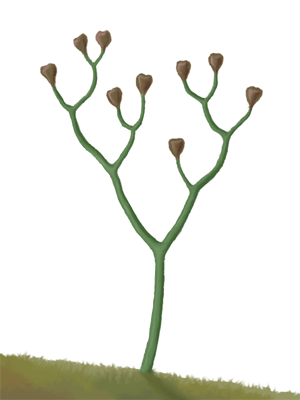Silurian
The Silurian was the period from the end of the Ordovician, about 443.4 million years ago (mya) to the beginning of the Devonian period, about 419 mya. It is the third period of the Paleozoic era and the Phanerozoic eon and the shortest period in the Paleozoic.
As with other geologic periods, the rock beds that define the period's start and end are well identified, but the exact dates are uncertain by several million years. The beginning of the Silurian is set at a major extinction when 60% of marine species were wiped out, the End-Ordovician extinction event.
First terrestrial biota
The Silurian was the first period that produced fossils on land that are macroscopic. That means you can see them without using a microscope. These fossils are moss forests along lakes and streams, and millipedes and scorpions on land later in the period. The fossil record of Eurypterids (sea scorpions) reached its greatest extent in the middle Silurian, about 430 million years ago.
The first fossil records of vascular plants, appeared in the second half of the Silurian period. The earliest known representatives of this group are the Cooksonia (mostly from the northern hemisphere) and Baragwanathia (from Australia). A primitive Silurian land plant with xylem and phloem but no differentiation in root, stem or leaf, was much-branched Psilophyton. This plant reproduced by spores and respired through stomata on every surface, and probably photosynthesized in every tissue exposed to light.
Some evidence suggests the presence of primitive predatory arachnids and myriapods in later Silurian rocks. Predatory invertebrates would indicate that simple food webs were in place which included non-predatory prey animals.[1][2]
Silurian Media
Ordovician-Silurian boundary on Hovedøya, Norway, showing brownish late Ordovician mudstone and later dark deep-water Silurian shale. The layers have been overturned by the Caledonian orogeny.
Life restoration of sarcopterygian Sparalepis tingi and other fauna from the Silurian of Yunnan
Cooksonia, the earliest vascular plant, middle Silurian
Silurian sea bed fossils collected from Wren's Nest Nature Reserve, Dudley UK
Eurypterus, a common Upper Silurian eurypterid
Pterygotus was a giant eurypterid that had a nearly cosmopolitan distribution (reconstruction shown here is Devonian species P. anglicus)










